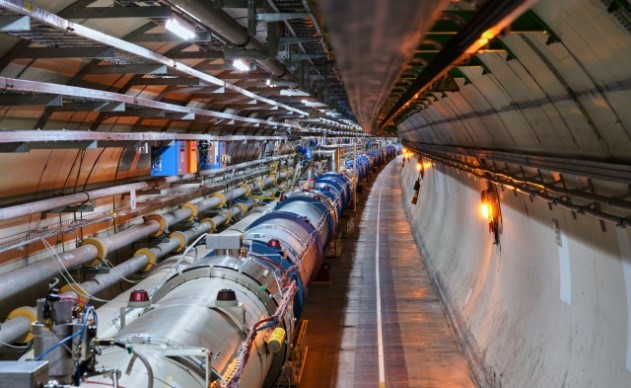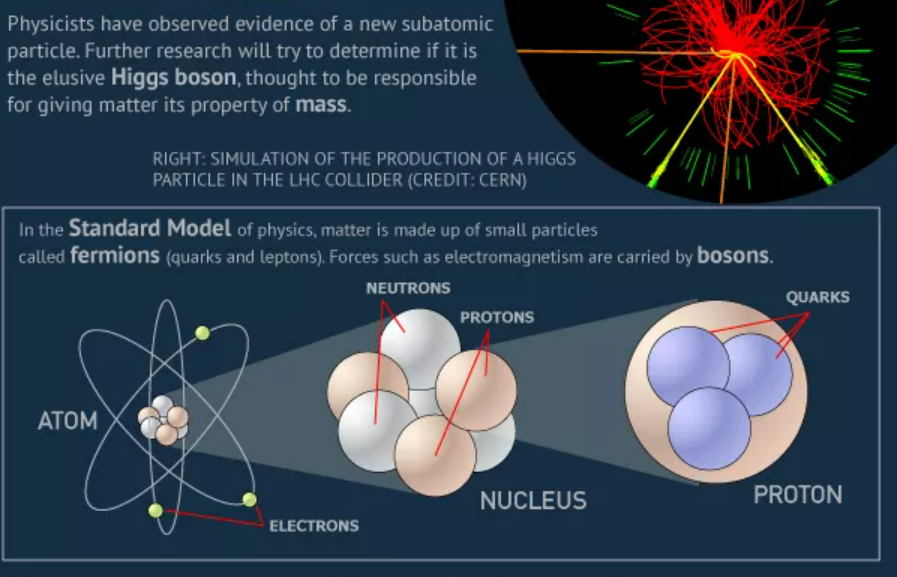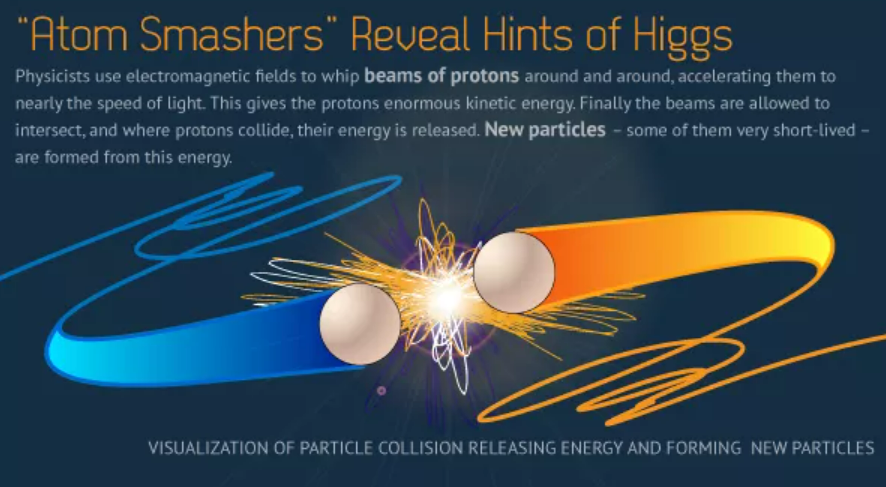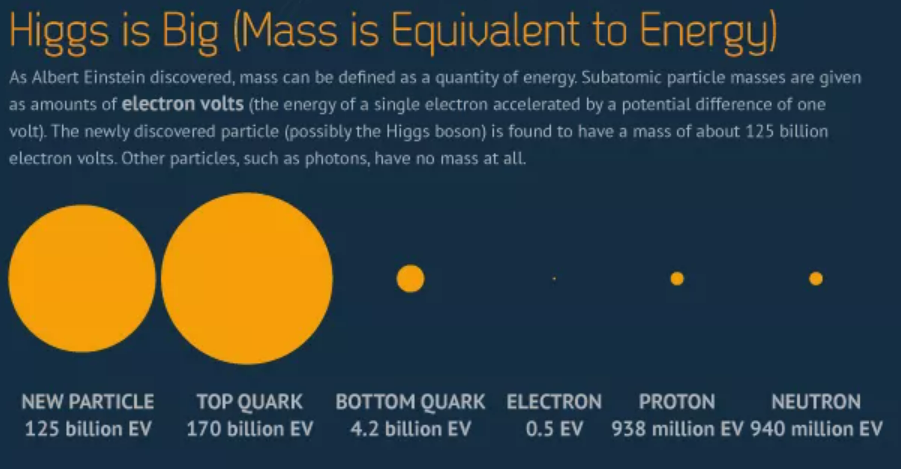Description

Disclaimer: Copyright infringement not intended.
Context
- Currently, engineers are warming up the Large Hadron Collider (LHC) for its operations.
LHC
About
- The Large Hadron Collider(LHC) is the world's largest and highest-energy particle collider.
- It accelerates two beams of particles in opposite directions and smashes them head on.
|
HADRON
The term hadron refers to subatomic composite particles composed of quarks held together by a strong force (analogous to the way that atoms and molecules are held together by electromagnetic force). The best-known hadrons are the baryons such as protons and neutrons; hadrons also include mesons such as the pion and kaon, which were discovered during cosmic ray experiments in the late 1940s and early 1950s.
|
Built by
Collaboration
- 10,000 scientists and hundreds of universities and laboratories, as well as more than 100 countries.
Location
- It lies in a tunnel 27 kilometres (17 mi) in circumference and as deep as 175 metres (574 ft) beneath the France–Switzerland border near Geneva.
Goal
- The LHC's goal is to allow physicists to test the predictions of different theories of particle physics, including measuring the properties of the Higgs boson, searching for the large family of new particles predicted by supersymmetric theories, and other unresolved questions in particle physics.
Working
- The collider has four crossing points where the accelerated particles collide.
- Seven detectors, each designed to detect different phenomena, are positioned around the crossing points.
- The LHC primarily collides proton beams, but it can also accelerate beams of heavy ions: lead–lead collisions and proton–lead collisions are typically performed for one month a year.
A collider is a type of particle accelerator that brings two opposing particle beams together such that the particles collide. In particle physics, colliders, though harder to construct, are a powerful research tool because they reach a much higher center of mass energy than fixed target setups. Analysis of the byproducts of these collisions gives scientists good evidence of the structure of the subatomic world and the laws of nature governing it. Many of these byproducts are produced only by high-energy collisions, and they decay after very short periods of time.
- The LHC typically uses protons, which are made up of quarks and gluons. It energises the protons by accelerating them using magnetic field through a narrow circular pipe that is 27 km long.
- By switching the direction of the magnetic field more and more rapidly, protons can be accelerated through the beam pipe.
- Eventually, the protons move at 99.999999% of the speed of light. According to the special theory of relativity, the energy of an object increases with its speed.
- When two antiparallel beams of energised protons collide head on, the energy at the point of collision is equal to the sum of the energy carried by the two beams.
- Thus far, the highest centre-of-mass collision energy the LHC has achieved is 6 TeV.
- At the moment of collision, there is chaos. There is a lot of energy available, and parts of it coalesce into different subatomic particles under the guidance of the fundamental forces of nature. Which particle takes shape depends on the amount and flavour of energy available and which other particles are being created or destroyed around it.

Findings of LHC
- The LHC consists of nine detectors. Located over different points on the beam pipe, they study particle interactions in different ways. The ATLAS and CMS detectors discovered the Higgs boson in 2012.
- Every year, the detectors generate 30,000 TB of data.
- Using the data from all these collisions, they have tested the predictions of the Standard Model of particle physics,; observed exotic particles like pentaquarks and tetraquarks and checked if their properties are in line with theoretical expectations; and pieced together information about extreme natural conditions, like the Big Bang.
Way Forward
- One way forward, is to improve the LHC’s luminosity (a measure of the machine’s ability to produce particle interactions of interest) by 10x by 2027 through upgrades.
- Another, idea is to build a bigger version of the LHC, based on the hypothesis that such a machine will be able to find ‘new physics’ at even higher energies.
New Physics is the collective name for particles or processes that can explain the nature of dark matter or why gravity is such a weak force, among other mysteries.
|
HIGGS BOSON
The Higgs boson is the fundamental force-carrying particle of the Higgs field, which is responsible for granting other particles their mass. The Higgs boson has a mass of 125 billion electron volts — meaning it is 130 times more massive than a proton.
It is also chargeless with zero spin — a quantum mechanical equivalent to angular momentum. The Higgs Boson is the only elementary particle with no spin.



|
READ:
STANDARD MODEL OF PHYSICS: https://www.iasgyan.in/daily-current-affairs/w-boson
|
PRACTICE QUESTION
Q. Which of the following statements are correct?
a) Higgs boson has a mass of 125 billion electron volts — meaning it is 130 times more massive than a proton.
b) The Higgs Boson is the only elementary particle with no spin.
c) The term hadron refers to subatomic composite particles composed of quarks held together by a strong force.
d) Bosons are sometimes called force particles, because it is the bosons that control the interaction of physical forces, such as electromagnetism.
1. a and c only
2. b and d only
3. c and d only.
4. All of the above statements are correct.
Correct Answer: Option 4
|

https://www.thehindu.com/sci-tech/science/explained-a-beginners-guide-to-the-large-hadron-collider/article66724349.ece















